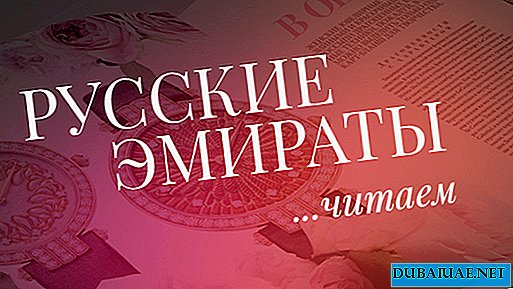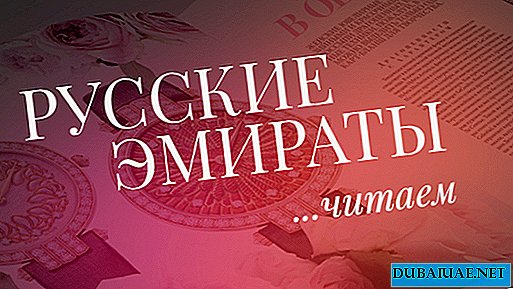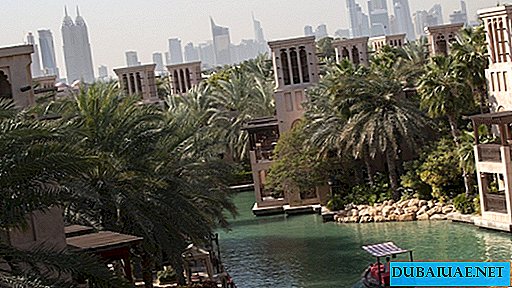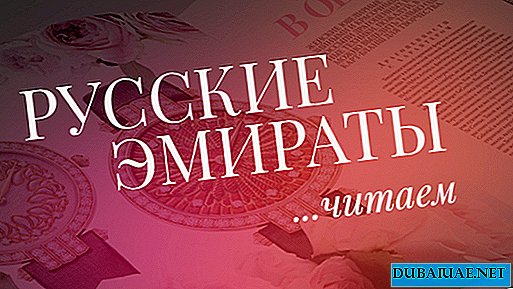New Rome, Constantinople, Istanbul
Istanbul was built by the Megarans near the town of Sarayburnu in 658 BC. The name Bizans (or Byzantium) comes from the name of King Bizas. The city of Bisans, built on one single hill, after the conquest by the emperor Constantine, was rebuilt and spread over seven hills. The city surrounded by fortified walls was turned into the center of the Eastern Roman Empire and became known as Constantinople or New Rome. In 1453, it was conquered by Sultan Fatih Mehmed, renamed Istanbul, and until 1923 was the center of the Ottoman Empire. Istanbul, with a population of 13 million people, stretching from west to east for 70 kilometers, is located on two continents, and is rightfully considered one of the most beautiful cities in the world. Continents are shared by the Bosporus Strait, which has gained worldwide fame.

Istanbul has been the capital of two empires and a center for the development of science and the arts for many centuries. The special period from which the new era of Istanbul began began in 470 years (1453-1923) of the reign of the Ottoman sultans.
Since 1453, mosques, palaces, Turkish baths and fountains began to be built in the new capital of the empire. By the sixteenth century, the Ottoman Empire reached the peak of its power and prosperity. It occupied the largest territory of all time, stretching from Persia in the east to Vienna in the west and from North Africa in the south to Russia in the north. The most powerful sultan of that time was Suleiman the Magnificent, who was in power for 46 years (1520 - 1566). By a happy coincidence, the most famous architect of the empire Sinan, who created more than three hundred architectural masterpieces, lived precisely during the reign of Suleiman. Suleiman was succeeded by Selim II, the son of the wife of Sultan Roksolana, a Ukrainian by birth. Selim was fortunate enough to inherit a well-organized empire in which sciences and arts flourished.
Topkapi Palace
Topkapi Palace is a grandiose monument of the heyday of the Ottoman Empire and Turkish civil architecture, which is a complex of courtyards, pavilions, mosques and fountains. The first courtyard is the main entrance to the palace. The second courtyard is the gate of salutes. Six paths open here. The first two roads lead to the palace kitchens.
The third road is to the Gate of happiness. The fourth will lead to the Sofa (House of Councils). The fifth way is to the harem. The road to the left is in the stables of the Sultan.
Today, a rich collection of Chinese and Japanese porcelain is exhibited in the kitchen. This collection is the third among the richest collections in the world after the Beijing and Dresden collections and consists of 10,700 rare and valuable items. Turkish, Arabian and Persian weapons are exhibited in one of the oldest buildings of the palace. The sultan stables feature expensive carriages and a harness. A collection of imperial clothes is exhibited at the page school - luxurious Sultan dresses made of silk, satin and brocade.
Behind the Gates of Happiness there is an audience hall, where the sultan, sitting on a golden throne with emeralds, received foreign guests and ambassadors. The fountain, built at the entrance, allowed the head of the empire to conduct secret negotiations without fear of eavesdropping, as the murmur of water drowned out the sounds of a human voice.
During the reign of the son of Suleiman and Roksolana Selim II, the summer palace was turned into a treasury. Now four of his rooms exhibit unique jewelry belonging to the Sultans. In the first room are decorated with precious stones golden swords and daggers, crystal hookahs, coffee sets and expensive goblets. The statuettes of a black slave and a sheikh sitting on a throne deserve special attention - the legs of the slave and the body of the sheikh are made of huge, rare, beautiful pearls.
The windows showcase the magnificent weapons of the Sultan, the throne with inlaid ivory and mother of pearl, a unique cane with a diamond tip, donated by the German Emperor William II to Sultan Abdul Hamid II, a gold model of the Chinese palace and an Indian music box with a gold elephant.
In the second room is the throne of Sultan Ahmed I of walnut. There is also a magnificent turban with precious stones - diamonds and rubies, jade products, so revered in the east, a golden cradle for newborn princes. It also houses the world famous dagger from the movie "Topkapi". Its golden hilt is decorated with three large emeralds. The world's largest emerald, weighing 3260 grams, and another one, weighing 1310 grams, are also exhibited there.
The third room houses the world's third largest diamond, the so-called "Spoon Diamond", weighing 86 carats. It is set in silver and surrounded by 49 smaller diamonds. In the 18th century, a French official named Pigot bought this diamond from Indian Maharaja and brought it to France. Then, at the auction, it was bought by Napoleon's mother. However, she soon had to sell the stone in order to rescue her son from exile. The diamond was acquired by the great vizier Ali Pasha. Proof of the authenticity of the transaction is a portrait of Ali Pasha with a diamond on a turban. Two gold chandeliers are also exhibited here, each weighing 48 kg and decorated with 6666 diamonds.
In the fourth room there is a golden Turkish-Indian throne, inlaid with pearls and emeralds, donated by the Persian Shah Nadir. Here are stored the bones of the hand of John the Baptist in a gold frame. Of great interest is the collection of watches from Turkey, England and France.

In the oldest building with domes, the sacred Islamic relics and personal relics of the Prophet Muhammad are stored: a print of his foot, a seal from amber, one of his oldest letters, executed on the skin of a gazelle and a box in which a bundle of hair from his beard and a lump of earth with his grave. A fragment of the Kaaba Gate in Mecca, a silver key to this gate, a mother-of-pearl model of the Umar Mosque in Jerusalem, part of the gold plating of the Najer and Esveda of the Kaaba’s sacred stone are also exhibited here. In addition, the silver throne of the Prophet Muhammad was installed in the hall, his bow and golden sword are kept. The rulers of the Ottoman Empire visited this sacred room once a year on the 15th day of Ramadan.
Harem and the Golden Cage
The word "harem" is of Arab origin and is derived from the modified "haram" (sin, forbidden). The Turks call it Darussade, which means "house of happiness."
Polygamy first appeared among the Assyrians, then it was adopted by Muslims, who were allowed to have up to four wives. Before the adoption of Islam, the Turks did not know polygamous marriages. In the 10th century, with the adoption of Islam, the Turks adopted the tradition of keeping harems, which was widespread during the Ottoman dynasty and was forbidden by Ataturk in 1926. Since the Sultans did not have much time for personal life because of the constant wars, until the sixteenth century, when Sultan Suleiman I ascended the throne, the harems were small. Religion allowed men to have four wives. This law was the result of wars, because it was necessary to provide a large number of widows, and the army constantly needed new recruits.
Until the 16th century, the Sultan’s harem was located in the Tiled Kiosk at the old palace. The kiosk was built in 1472 by Sultan Mehmed II - the Conqueror for entertainment. In 1453, when Mehmed II conquered Istanbul, he built his first palace on the spot where the Istanbul University and Suleyman Mosque are now located. But, since the palace was too small, in 1459 the Sultan decided to build the Topkapi Palace. Later, in the 16th century, a harem was added to the new palace. The palace was the official residence of the Ottoman sultans until 1839, when Abdul Mehmed I moved to the new Dolmabahçe palace.
In the golden age of the empire, about 4,000 people lived in Topkapi. The whole complex included four large courtyards and a harem. It covers an area of 700 thousand square meters. The name "Topkapi" means "Cannon Gate." The palace is surrounded by walls connecting the Byzantine part on the banks of the Golden Horn and the walls of the Sea of Marmara. At one time, Roksolana, the Ukrainian wife of Sultan Suleiman the Magnificent, persuaded her husband to allow her to settle in a new palace with her slaves and eunuchs. Then, new rooms were built in the palace - the bedrooms of the Sultan and his mother, and the harem turned into a large complex consisting of 400 rooms. The relocation of the Sultan dynasties and their families to the palace strengthened the dominant role of the Padishah wives in the life of the harem and in the administration of the state.
The buildings that have survived to our days date back to 16-18 centuries. Since 1971, part of the complex has been provided to tourists and visitors to the museum. Beginning of the review - a place that used to be called the "Entrance gate harem."
The harem was a forbidden world for prying eyes. The exception was the padish and his immediate family and close associates. Access was open here only for representatives of three professions: doctors, teachers of princes and musicians. The non-Muslim could not even dream of entering the harem. In addition to the wives and the Sultan’s mother, young princes, future heirs to the throne, lived in the harem. Slaves-jaraye bought the sultans as servants, and sometimes just gave. The sultans made those whom they liked their concubines, whom they called "ukvay." Each concubine had her own chambers, slaves and eunuchs. Some concubines became the legal wives of the Sultans. That wife, who had the first son of the Sultan, was appointed by his first wife. The wife whom the Sultan especially loved was called his beloved wife. Some of them, for example, the Ukrainian wife of Sultan Suleiman Roksolan, left their mark on history. Despite the fact that his firstborn was considered the successor of the Sultan, in fact, the country was ruled by wives and concubines.

Many residents of the harem, Padishah’s wives, concubines, maidservants came here from the slave market or as an offering to the Sultan. These women accepted the Mohammedan faith. Slaves brought to Istanbul from different parts of the world, although they were distinguished by their unsurpassed beauty and presented to the padishahs of the heirs, lived in the luxuries and pomp of palaces, which were akin to imprisonment, so their affection for the padishis and the Ottoman dynasty could not be sincere and lasting.
Since the sultanate was inherited in the Osman dynasty by the eldest son, the biggest dream of the concubines and the sultan of the harem was considered to be the birth of the heir to the throne. Only in such a way their future and secured old age were guaranteed. On the other hand, between the darlings of the padishah and the mistress of the harem, the Sultan's mother was in feverish strife. The Sultana-mother (Valide-Sultan) imperiously knew all the affairs of the harem. In the premises of the harem, she was allocated more than 40 rooms and a large number of minions.
In the palace harem, the servants of the padishah were concubines, as well as female babies brought from the campaigns of aggression. Without fail, the names and faith of all these women and girls changed. Women who gave birth to children, being spouses of the padishahs, had the right to receive a separate room in the harem, the rest continued their life in the harem, serving others and tirelessly following the orders of the padishah, or they were married to wealthy dignitaries of the highest rank, after which they gained a free life.
The harem with an area of 6,700 square meters, had about three thousand rooms, forty-six toilets, eight Turkish baths, four kitchens, two mosques, six storage rooms for Kalyar foodstuffs, a swimming pool and a hospital.
The head of the black eunuchs - "the lord of the girls" was a special person close to the Sultan, and the third influential person in the state after the Padishah and mother Sultana. Blackened eunuchs were blackened negroes. After forced castration, only a small part of these people survived due to loss of blood and unsanitary conditions in which the operation was carried out. Only blacks of African descent were admitted to the post of black eunuch, which helped to strengthen vigilant control in the harem. Black eunuchs, infringed on their position, became the focus of palace intrigues.
In order to end the fraternal strife, during the reign of the Sultan Atih the Conqueror, by his decree, the killing of the Padishah brothers and their heirs was legalized. In later periods, the tradition of killing the padishah brothers was forgotten, and if the padishah died at an early age, without becoming a father, the brothers and nephews were confined to the harem, called the "golden cage." Some padishahs became victims of palace intrigues.
You can still talk about the mores that reigned in the walls of the Sultan’s harems. However, this part of the trip to Turkey came to an end. Until we meet again.










